La Esmeralda Ballet is a fascinating and romantic ballet inspired by Victor Hugo’s book “Notre Dame de Paris” (1831). Without a doubt, it is Jules Perrot’s masterpiece as a choreographer. If you want to know more about the history and plot of this ballet, continue reading the article.
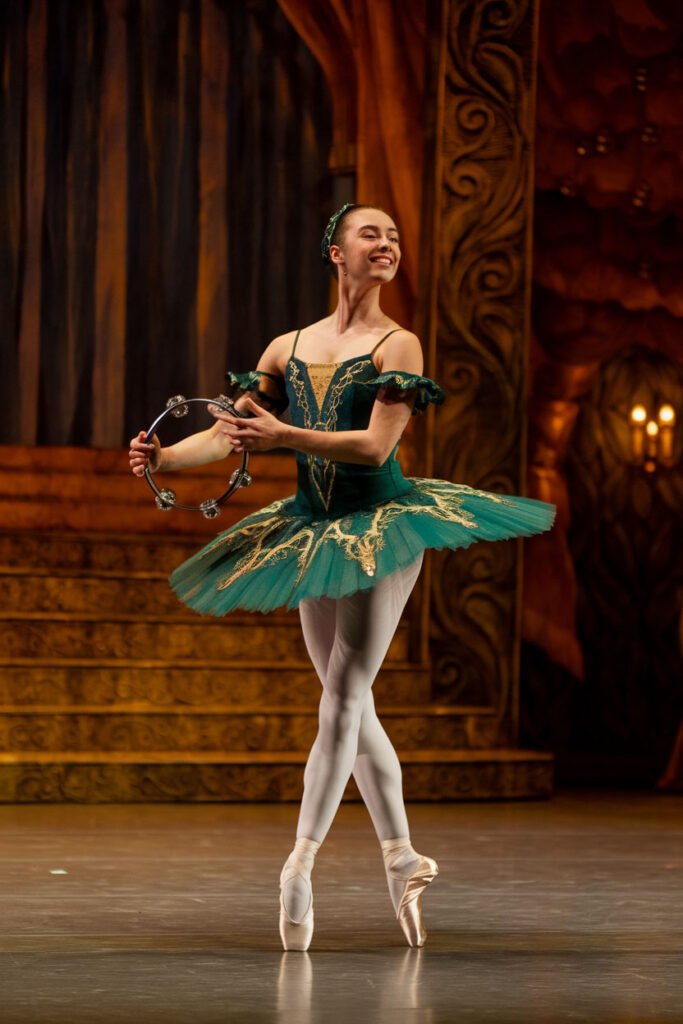
Table of Contents
Key Facts about La Esmeralda Ballet
- Ballet in two acts and five scenes.
- Choreography: Jules Perrot.
- Music: Cesare Pugni.
- Libretto: Jules Perrot, after Victor Hugo’s novel Notre-Dame de Paris.
- Scenery: William Grieve.
- Costumes: Madame Copere.
- First performance: 9 March 1844, Her Majesty’s Theatre, London.
- Principal dancers: Carlotta Grisi (Esmeralda), Jules Perrot (Pierre Gringoire), Arthur Saint-Leon (Phoebus), Louis Gosselin (Claude Frollo), Antoine Louis Coulin (Quasimodo). Adelaide Frassi (Fleur-de-Lys), Mme. Copére (Aloisa).

The History of La Esmeralda Ballet
The plot is based on Victor Hugo’s famous novel The Hunchback of Notre Dame (1831). It tells the complex story of Quasimodo’s hopeless love for the Gypsy girl, Esmeralda, the machinations of an evil priest, Frollo and how Quasimodo sacrifices his life to save that of his beloved.
The music was composed by Cesare Pugni in London, where he kept closely in touch with Benjamin Lumley (the manager of Her Majesty’s Theatre) and the choreographer Perrot. On the other hand, the scenery was designed by William Grieve and the costumes by Madame Copere. She had worked as a dancer at Her Majesty’s Theatre from 1826 to 1847 and as costume mistress during the latter part of that period. Perrot’s clothing in his role as Gringoire, the poet, is vaguely 15th-century in style, as needed by the story. Esmeralda’s bodice and pigtails, on the other hand, indicate her gypsy origin.
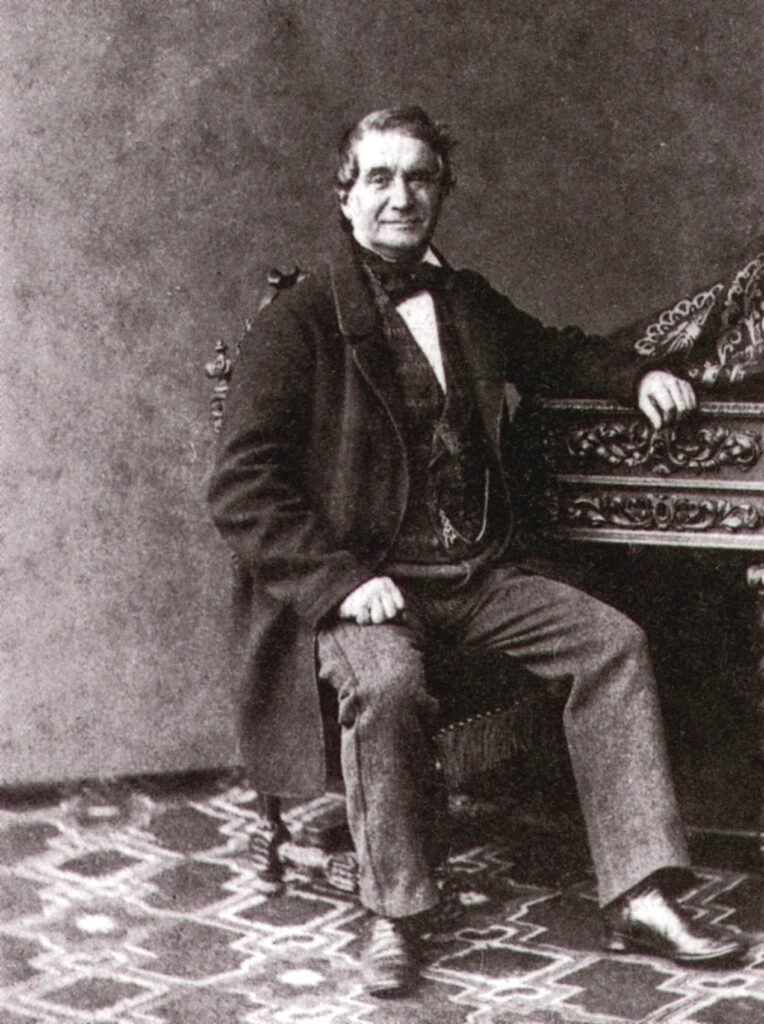
A Romantic Ballet Set in Medieval Paris
Esmeralda was the first ballet where each corps de ballet member played an individual role in the market scenes set beneath Notre Dame Cathedral. Before this ballet, members of the corps de ballet usually performed the same steps at the same time, or in figures. But Perrot wanted the scenes to look like real life. That’s why he gave everyone something different to do, showing later choreographers how to animate the stage.
The ballet is built on the principle of romantic antithesis. The noble Phoebus, splendid and arrogant, is contrasted with the humble and endearing poet Gringoire. Similarly, Esmeralda’s sublime and poetic love contrasts with Claude Frollo’s merciless cruelty.
A heterogeneous conglomeration of beggars, cripples, soldiers and citizens animated the streets and squares of medieval Paris, under the watchful gaze of the sombre Notre Dame. The Gothic cathedral, with its imposing silhouette, represented the indisputable power of the Church. Also, Perrot conceived La Esmeralda as a classical ballet, with pure forms and precise lines, rejecting the trends of his time that incorporated divertissement numbers.

The Evolution of La Esmeralda Ballet
La Esmeralda has been performed in various interpretations by Russian and Soviet composers and choreographers. This ballet was staged by Perrot at the Bolshoi Theatre in St. Petersburg, on December 1848. In this version, Esmeralda was not executed, but saved by Phoebus. Years later, Marius Petipa revived the ballet twice for the Mariinsky Theatre, in 1886 and 1899. He removed some pantomime scenes and expanded and diversified the ballet’s dance palette. In particular, he added Esmeralda’s dance at the Ball given by Fleur de Lys: a danced and dramatic prayer by a gypsy who learns that her beloved has a fiancée. La Esmeralda was also performed in Moscow at the Bolshoi Theatre by Perrot in 1850 and José Mendes in 1890. In 1918 and 1933 the ballet was performed in Petrograd based on Petipa’s choreography.
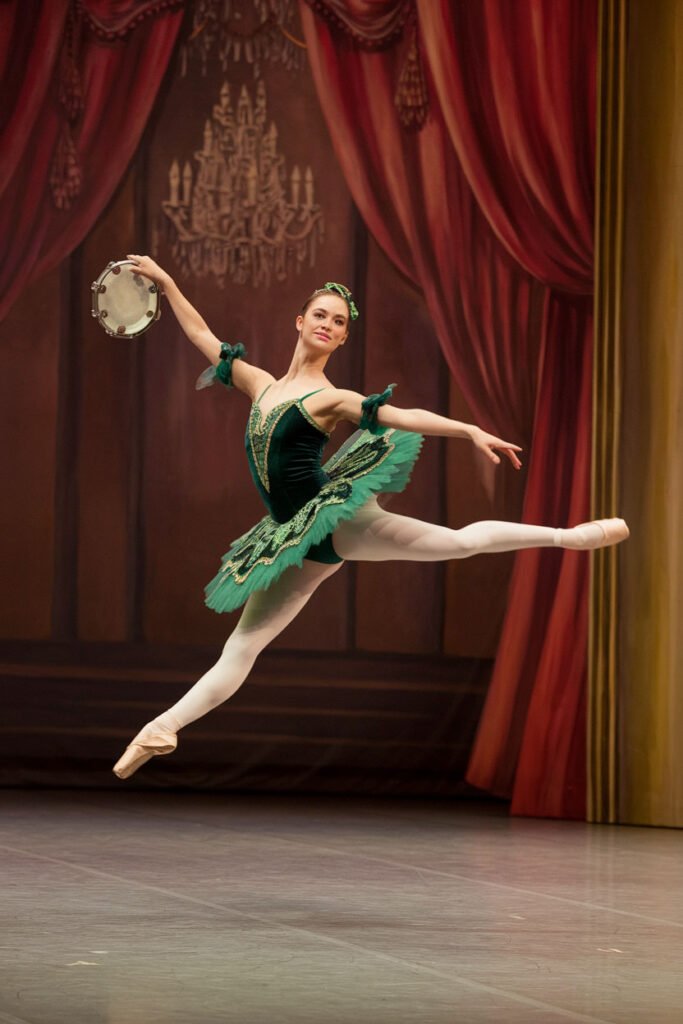
Vaganova’s Version of La Esmeralda Ballet
But without a doubt one of the most outstanding versions was that of Agripinna Vaganova, performed on 23 April 1935 in Leningrad. This new version had three acts and nine scenes. Vaganova tried to recreate the spirit of Perrot’s original score, emphasizing the dramatic and logical structure of the action. The scenery was redesigned, creating a romantic and picturesque atmosphere of medieval Paris during the reign of Louis XI, during the transition from the Middle Ages to the Renaissance. To achieve maximum realism, Vaganova recomposed the dances of the Truands, the inhabitants of the Cour des Miracles (The Court of Miracles).
Besides, Vaganova composed a virtuoso interlude for the ball scene at Fleur de Lys’s house. It is a pas de deux of Diana and Actaeon, loosely inspired by Greek mythology. This new pas de deux is based on a fragment of a work by Petipa from 1868, with music by Pugni and Drigo. Today, it is known as the pas de deux of Diana and Actaeon, and it is still danced as a concert piece.
The Plot of La Esmeralda Ballet
Act I
Scene 1. The Court of Miracles.
The play is set in medieval Paris, where the market district of Les Halles was located. The merchants, members of the bourgeoisie and the common people hurry to leave the square because at nightfall it becomes a kingdom of vagabonds, beggars and thieves known as the Court of Miracles, the slums of medieval Paris. But Gringoire, a young poet, falls into the hands of thieves. Having no money, he is sentenced to death. However, according to their laws, if a woman agrees to marry him, she will save him. When he is about to be hanged, Esmeralda appears and agrees to marry him to save the poor wretch. They will be married for the next four years and general revelry begins.
The hunchback Quasimodo, the bell ringer of Notre-Dame, tries to kidnap Esmeralda. He is acting on the orders of his master, Archdeacon Claudio Frollo, who is in love with her. However, Captain Phoebus and his soldiers prevent him and capture Frollo. Fascinated by Esmeralda’s beauty, he gifts her a scarf and agrees to set the hunchback free at her request.
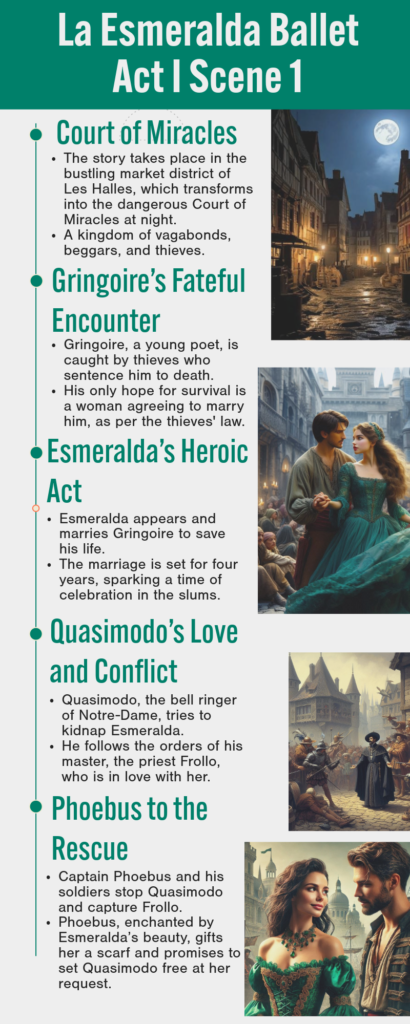
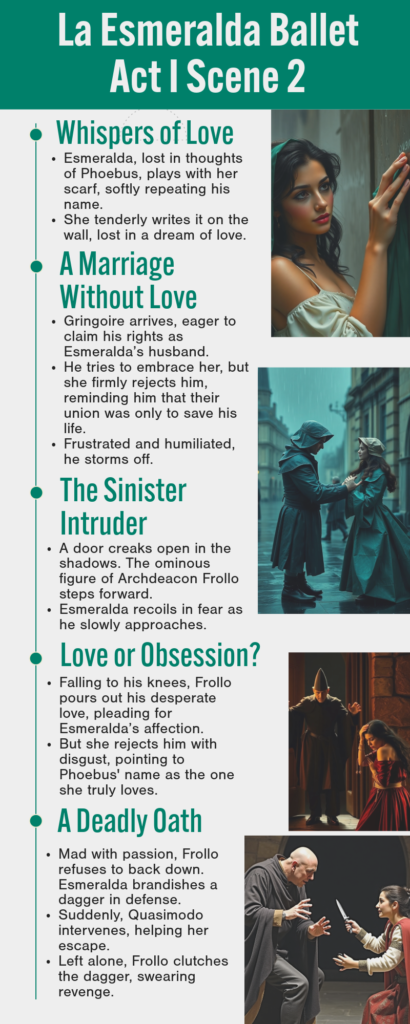
Scene 2. Newlyweds. Esmeralda’s room.
Esmeralda, in love with Phoebus, plays with the scarf, repeats his name, and writes it on the wall. Gringoire arrives and tries to kiss her and hug her. But she makes it clear that she only married him to save him. Then, Gringoire leaves frustrated. In the background, a door slowly opens and the sinister figure of Archdeacon Frollo appears. Esmeralda, frightened, asks him to leave but he, dropping to his knees, begs her to accept his passionate love. Esmeralda rejects him with contempt and pointing out Phoebus’ name makes it clear that it is he whom she loves. Undeterred, Frollo continues to approach and Esmeralda takes out a dagger. Quasimodo helps Esmeralda escape in gratitude for her kindness. Frollo swears revenge and takes the dagger with him.
Act II
Scene 3. Fleur-de-Lis.
In Madame Gondelaurier’s splendid mansion, the servants are preparing for the marriage of Fleur-de-Lys and Captain Phoebus. Phoebus arrives, but is oblivious to everything, not forgetting his encounter with Esmeralda. His fiancée notices he is not wearing the scarf she had given him. So, she asks him for an explanation. But when he gives her the ring, she forgets and shows her ring to her mother. The celebrations begin. Her mother’s gift is the allegorical ballet “Diana and Actaeon.“
Later, Esmeralda and Gringoire appear, accompanied by their friends, and dance for the guests. When Esmeralda sees Phoebus and realizes that he is going to marry Fleur-de-Lys, she feels completely dejected. She decides to leave and puts on her scarf. So, Fleur de Lys, realizing her boyfriend’s betrayal, takes it off and throws it on the floor. Esmeralda picks it up and runs away. Fleur de Lys takes off her ring and throws it away, while Phoebus runs after Esmeralda.
Act III
Scene 4. Love and jealousy. A room in an inn.
Esmeralda and Phoebus meet at the inn, where he declares his love for her. From the shadows appears the archdeacon Frollo who stabs Phoebus, without being seen by Esmeralda. A crowd appears and Frollo joins them and pretends to find the dagger. She admits that it is hers. So, the crowd accuses her of the murder and sentences her to death.
Scene 5. The Festival of Fools.
On the square, to the right is the prison and in the background is the Notre-Dame cathedral. Esmeralda is taken to jail awaiting her execution. A crowd invaded the square to celebrate the Feast of the Fools. They crown Quasimodo as the ugliest in Paris and dress him up as the Pope of the Fools. Frollo, indignant, accuses him of blasphemy and rips off his outfit. Esmeralda is taken out of the prison and taken to her execution. Suddenly, Phoebus appears, having recovered from his wounds. And he accuses the archdeacon of trying to kill him. Then, Esmeralda runs into the arms of her beloved. But Frollo, enraged, draws his dagger and attacks them. However, Quasimodo defends them and kills the archdeacon. Phoebus and Esmeralda declare their eternal love.
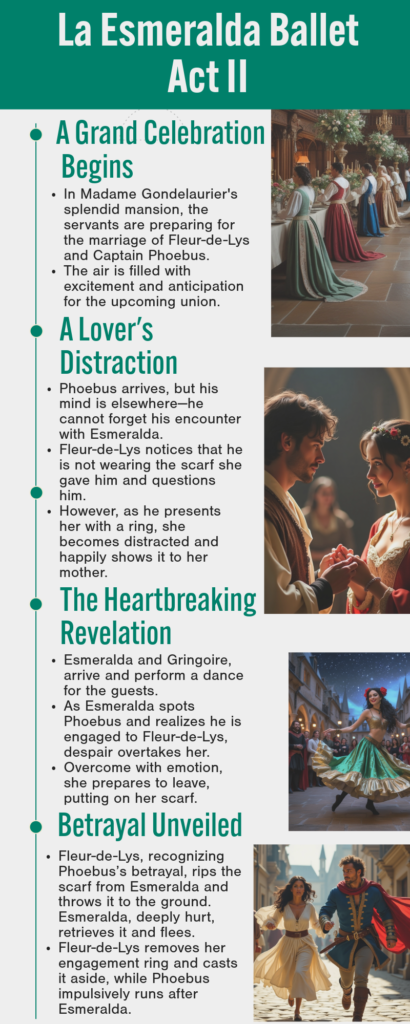
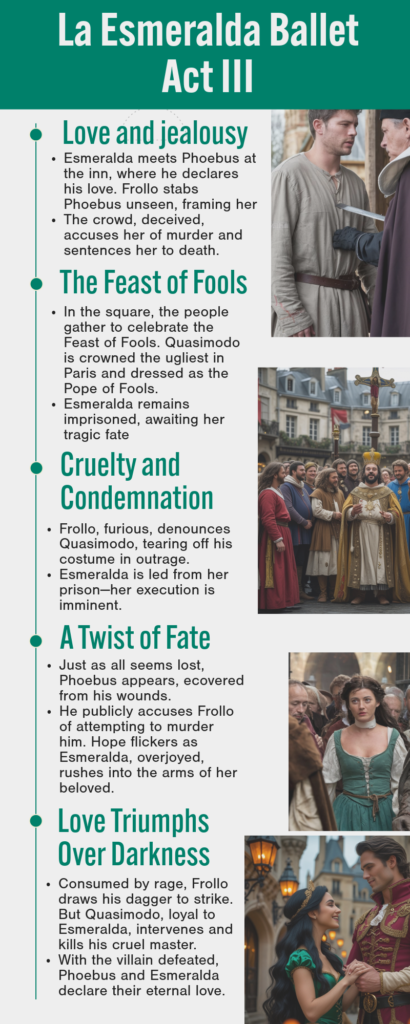



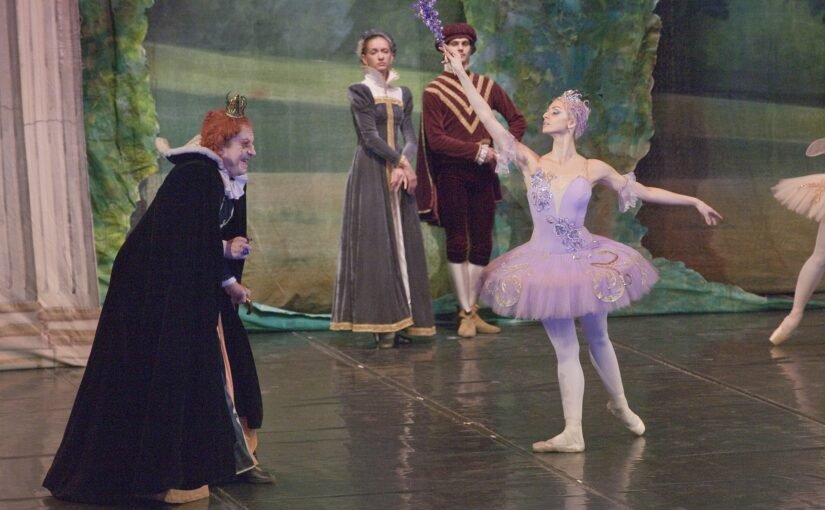
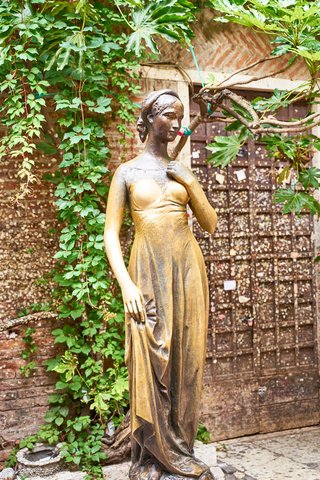
Leave a Reply